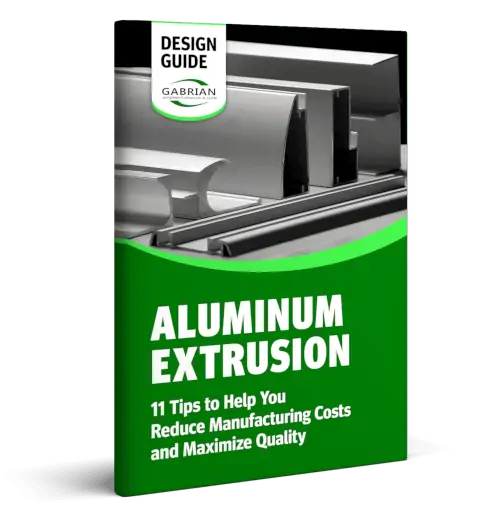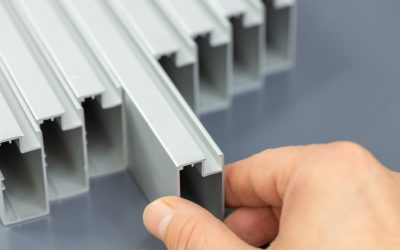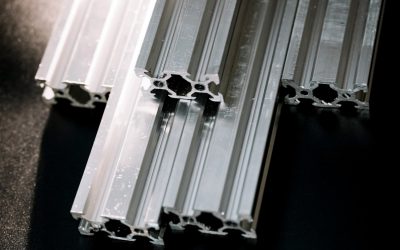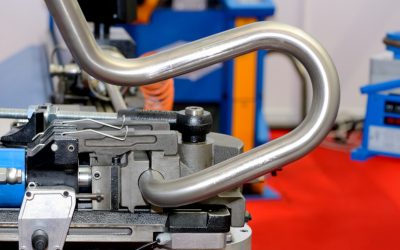If you are producing an aluminum part or product, you likely want it to have a protective and attractive surface treatment. And with all the options available, it’s easy to get overwhelmed.
This article compares two of the most popular aluminum surface finishing processes: anodizing and powder coating. If you want to understand what these two treatments are about, or if you’re on the fence trying to choose between them, this article will help you make the right choice.
Table of Contents
What is Anodizing?
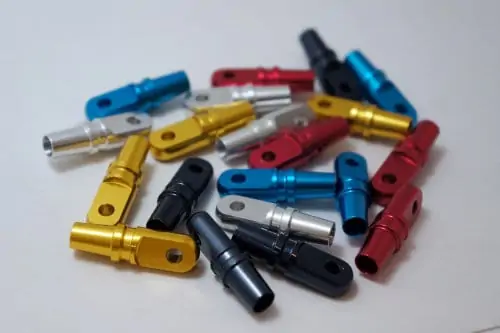
A collection of clear and color anodized aluminum parts
Aluminum naturally develops a thin layer of oxide on its surface when exposed to air. This oxide layer is passive, meaning it no longer reacts with the surrounding environment — and it protects the rest of the metal from the elements.
Anodizing is a surface treatment for aluminum parts that takes advantage of this oxide layer by thickening it. Technicians take the aluminum piece, such as an extruded part, submerge it into an electrolytic bath, and run an electric current through it.
By using aluminum as the anode in the circuit, the oxidation process occurs on the surface of the metal. It creates an oxide layer thicker than the naturally occurring one.
This artificial oxide layer enhances the properties of the naturally-formed oxide layer, such as resistance to wear and corrosion, increased heat dissipation, and improved glue and primer adhesion. The resulting surface is also perfect for adding dyes, and the finishing service provider can recycle the chemicals in the electrolytic bath for future anodizing projects.
Please refer to our anodized aluminum article to know more about this process and its advantages.
What is Powder Coating?
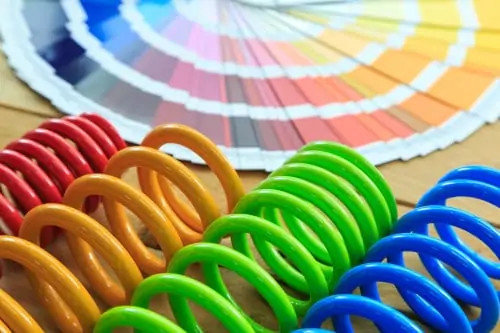
Bright powder-coated metal springs
Powder coating is another type of finishing process used on a wide variety of metal products. This process results in a protective and decorative layer on the surface of the treated product.
Unlike other coating applications (e.g., painting), powder coating is a dry application process. No solvents are used, making powder coating an environmentally friendly alternative to other finishing treatments.
After cleaning the part, a technician applies the powder with the help of a spray gun. This gun applies a negative electrostatic charge to the powder, which makes it attracted to the grounded metal part. The powder remains attached to the object while it’s cured in an oven, turning the powder coat into a uniform, solid layer.
The resulting coating is very durable and attractive. You can apply it in thick layers and a wide variety of colors and textures. If you’d like to know more about the process, please see our article on powder coating.
Anodizing vs. Powder Coating: How They Compare
The following table shows a direct comparison between anodizing and powder coatings as surface finishing processes.
| Anodizing | Powder Coating |
|---|---|
| Can be very thin, meaning only very slight changes to the dimensions of the part. | Can achieve thick coats, but it is very difficult to obtain a thin layer. |
| Great variety of metallic colors, with smooth finishes. | Extraordinary variety in colors and textures can be achieved. |
| With proper electrolyte recycling, anodizing is very environmentally friendly. | No solvents are involved in the process, making it very environmentally friendly. |
| Excellent wear, scratch, and corrosion resistance. | Good corrosion resistance if the surface is uniform and undamaged. Can wear and scratch more easily than anodizing. |
| Resistant to color fading as long as the dye selected has suitable UV resistance for the application and is sealed properly. | Very resistant to color fading, even when exposed to UV light. |
| Makes the aluminum surface electrically non-conductive. | Some electrical conductivity in the coating but not as good as bare aluminum. |
| Can be an expensive process. | More cost-effective than anodizing. |
Typical Applications for Each of These Processes
Product designers most commonly use anodizing for aluminum products that require superior corrosion and wear resistance. They often select it for structural and architectural applications in which they desire an attractive finish, but protection is paramount. You will also find anodized surfaces in appliances, furniture, sporting goods, electronic equipment, and automotive components for this reason.
You will often see powder coatings in outdoor equipment and parts that require brilliant colors and a resistance to fading along with excellent durability. In architecture, it’s common to see aluminum doors/windows, facades, bathroom fixtures, and metal gutters treated with powder coatings. Other typical applications of powder coatings include household appliances, automotive parts, lawn equipment, playgrounds, and fire hydrants.
| Anodizing | Powder Coating |
|---|---|
| • Appliances • Furniture • Sporting Goods • Electronic Equipment • Automotive Components |
• Household Appliances • Automotive Parts • Lawn Equipment • Playgrounds • Fire Hydrants |
Which Aluminum Finish Should You Choose?
Your choice of surface finish will ultimately depend on the application of your product. Both anodizing and powder coating are very environmentally friendly options for aluminum surface treatment.
Anodizing is ideal if you want tight dimensional margins, outstanding corrosion and wear resistance, and an attractive metallic look. If your aluminum product needs to dissipate heat, or you’ll subject it to glue or primer application, it is preferred.
A powder coating might be the solution if you’re looking for vibrant colors or unique textures that will last, even when exposed to the elements. It also offers relatively good protection at a lower cost than anodizing.
If you want to explore alternatives to these surface finishing methods, PVDF is another excellent choice, particularly for architectural projects. Refer to our article on PVDF Coating to find out more. And if you are designing an extruded aluminum part, we recommend downloading our extrusion design guide.

